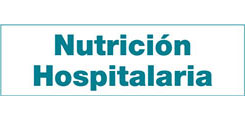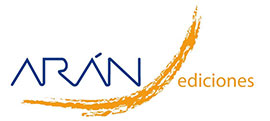Trabajo Original
Acute effect of a maximum incremental test until exhaustion on malondialdehyde and antioxidant vitamins in plasma and erythrocytes in athletes
Javier Alves Vas, Gema Barrientos, Víctor Toro Román, María Concepción Robles Gil, Marcos Maynar Mariño, Diego Muñoz Marín
 Número de descargas:
17257
Número de descargas:
17257
 Número de visitas:
4873
Número de visitas:
4873
 Citas:
0
Citas:
0
Compártelo:
Background: it is well known that moderate or vigorous physical exercise produces an increase in free radicals. Aim: the aims of this study were to observe changes in malondialdehyde and antioxidant vitamins after a maximum incremental test, and to relate malondialdehyde and antioxidant vitamin values to performance parameters. Methods: eighty-four male athletes participated in this study. Participants performed a maximum incremental test until exhaustion on a treadmill. Malondialdehyde in plasma and antioxidant vitamins in plasma and erythrocytes were determined before and after the test. Results: in plasma, there was a decrease in malondialdehyde after the test. In erythrocytes, results showed increases in vitamin C and decreases in vitamin E after the test. Maximal oxygen uptake values were associated positively with vitamin C and negatively with malondialdehyde levels before the test. On the other hand, maximal oxygen uptake, total test time, and total test distance were positively related to the malondialdehyde values obtained after the test. Conclusions: a maximum incremental test did not produce any changes in plasma vitamins in athletes. However, it increased the levels of vitamin C in erythrocytes and decreased malondialdehyde values in plasma and vitamin E in erythrocytes. The levels of malondialdehyde, vitamin C and vitamin E were related to performance parameters. These results may be linked to the adaptation of antioxidant systems due to regular training.
Palabras Clave: Erythrocyte. Plasma. Vitamins. Free radicals.
Artículos Relacionados:
Trabajo Original: Efecto del tratamiento de dos días con orlistat sobre los niveles de leptina plasmática en pacientes obesas sin pérdida de peso
Ana Rodríguez-valle , María Ángeles Navarro-ferrando , Diana Boj-carceller , Jesús Fernando Escanero-marcén , Alejandro Sanz- Paris
Trabajo Original: Efecto de esteroles vegetales en la reducción del colesterol plasmático: ensayo clínico, controlado, aleatorizado, cruzado y doble ciego
Ismael San Mauro-martin , Luis Collado-yurrita , Javier Andrés Blumenfeld-olivares , María Ángeles Cuadrado-cenzual , María Elisa Calle-purón , Marta Hernández-cabria , Elena Garicano-vilar , Eva Pérez-arruche , Esperanza Arce-delgado , María José Ciudadcabañas
Artículo Especial: Pautas nutricionales en prevención y control de la hipertensión arterial
Rosa M. Ortega Anta , Ana Isabel Jiménez-Ortega , José Miguel Perea Sánchez , Esther Cuadrado Soto , Ana M. López Sobaler
Trabajo Original: Is plasma selenium correlated to transthyretin levels in critically ill patients?
Renata Germano Borges de Oliveira Nascimento Freitas , Roberto Jose Negrão Nogueira , Silvia Maria Franciscato Cozzolino , Ana Carolina Junqueira Vasques , Matthew Thomas Ferreira , Gabriel Hessel
Trabajo Original: Glutaminemia prognostic signifi cance in critical surgical patients - an analysis of plasma aminogram profile
Beatriz Pinto Costa , Carla Verissimo , Marta Simões , Marisa Tomé , Manuela Grazina , Jorge Pimentel , Francisco Castro Sousa
Revisión: Biomarcadores de pronóstico modificables nutricionalmente en el paciente con cáncer colorrectal tras el diagnóstico de la enfermedad
Beatriz Escudero Paniagua , Alicia Aguilar-martínez , Begoña Manuel Keenoy
Trabajo Original: Efecto de una suplementación de vitaminas y minerales de cuatro semanas sobre el estado nutricio y excreción urinaria de arsénico en adolescentes
Rebeca Monroy Torres , Antonio Espinosa Pérez , Xochitl Ramírez Gómez , Leticia Carrizales Yáñez , Benigno Linares Segovia , Jesús Mejía Saavedra
Trabajo Original: Patología neurológica por déficit de vitaminas del grupo b: tiamina, folato y cobalamina
Virgilio Hernando-Requejo
Revisión: Niveles máximos de vitaminas y minerales en complementos alimenticios en Europa
Antoni García Gabarra
Trabajo Original: Influencia del entrenamiento en fútbol sobre parámetros de estrés oxidativo en eritrocitos
Jesús Siquier Coll , Diego Muñoz Marín , Francisco Javier Grijota Pérez , Ignacio Bartolomé Sánchez , María Concepción Robles Gil , Julio Montero Arroyo , Marcos Maynar Mariño
Artículo Especial: Alimentos para usos médicos especiales en la Unión Europea: una actualización legislativa incompleta
Antoni García Gabarra
Trabajo Original: Patología neurológica por desequilibrio de vitaminas liposolubles
Virgilio Hernando-Requejo , Pablo Manrique de Lara Cadiñanos
Revisión: Avances en el conocimiento del uso de micronutrientes en nutrición artificial
Revisión: Retinol, β-carotene, α-tocopherol and vitamin D status in European adolescents; regional differences and variability: A review
Trabajo Original: Analysis of plasma and erythrocyte zinc levels in premenopausal women with breast cancer
Trabajo Original: Dietary supplements for the lactating adolescent mother: influence on plasma micronutrients
Trabajo Original: Utilización de micronutrientes en nutrición parenteral en los hospitales españoles
Carta Editor: Biomarkers of metabolic syndrome and its relationship with the zinc nutritional status in obese women
Trabajo Original: Citrulina plasmática como marcador de pérdida de masa enterocitaria en la enfermedad celíaca en la infancia
Trabajo Original: Cumplimiento de las recomendaciones dietéticas vigentes y variabilidad geográfica de la dieta en mujeres participantes en 7 programas de cribado de cáncer de mama en España
Trabajo Original: Association of nutritional status, plasma, albumin levels and pulmonary function in cystic fibrosis
Trabajo Original: Niveles de vitamina A y zinc en pacientes de cirugía gastroenterológica. Relación con la inflamación y la aparición de complicaciones postoperatorias
Revisión: Potential mental and physical benefits of supplementation with a high-dose, B-complex multivitamin/mineral supplement: What is the evidence?
Jerome Sarris , Bincy Mehta , Veronika Óvári , Inmaculada Ferreres Giménez
Revisión: Micronutrientes en cirugía bariátrica
Trabajo Original: Palm tree syrup; nutritional composition of a natural edulcorant
Trabajo Original: Dietary intake increases serum levels of carboxymethil-lysine (CML) in diabetic patients
Trabajo Original: Effects of the dietary amount and source of protein, resistance training and anabolic-androgenic steroids on body weight and lipid profile of rats
Trabajo Original: Zinc in plasma and breast milk in adolescents and adults in pregnancy and pospartum; a cohort study in Uruguay
Carta Editor: High-protein diets and renal status in rats
Trabajo Original: Estrés oxidativo; estudio comparativo entre un grupo de población normal y un grupo de población obesa mórbida
Trabajo Original: Aporte de vitaminas y minerales por grupo de alimentos en estudiantes universitarios chilenos
Revisión: El ácido alfa lipoico y su poder antioxidante frente al cáncer y las patologías de sensibilización central
Trabajo Original: ¿El consumo de vitaminas de los alimentos fortificados supera los límites permitidos? estudio realizado en población joven y adulta joven de la región metropolitana de Chile
Trabajo Original: Predicting survival of endoscopic gastrostomy candidates using the underlying disease, serum cholesterol, albumin and transferrin levels
Revisión: Selenio y salud; valores de referencia y situación actual de la población española
Trabajo Original: Effects of supplementation of antioxidant vitamins and lipid peroxidation in critically ill patients
Trabajo Original: Prevalence of metilentetrahidrofolate reductase C677T polymorphism, consumption of vitamins B6, B9, B12 and determination of lipidic hydroperoxides in obese and normal weight Mexican population
Trabajo Original: Composición mineral de los distintos tipos de gofio canario; factores que afectan a la presencia de Na, K, Mg, Ca, Mn, Fe, Cu y Zn
Revisión: La desnutrición clínica en 2014; patogenia, detección precoz y consecuencias; desnutrición y trofopatía
Trabajo Original: Fat-soluble vitamin deficiencies after bariatric surgery could be misleading if they are not appropriately adjusted
Revisión: ¿Son efectivos los suplementos antioxidantes en la disminución del dolor muscular tardío? Una revisión sistemática
Trabajo Original: Suplementacion con vitaminas liposolubles en pacientes con fibrosis quistica: ¿es suficiente con Aquadek’s®?
Trabajo Original: Caracterización antropométrica, calidad y estilos de vida del anciano chileno octogenario
Trabajo Original: Effect of long term intake of white tea on acute oxidative stress in rats
Trabajo Original: Glucomannan and glucomannan plus spirulina-enriched squid-surimi added to high saturated diet affect glycemia, plasma and adipose leptin and adiponectin levels in growing fa/fa rats
Trabajo Original: Clinical effects of hydration, supplementary vitamins, and trace elements during end-of-life care for cancer patients
Dana Aline Pérez-Camargo , Silvia Rosa Allende-Pérez , Mónica M. Rivera-Franco , Víctor Itaí Urbalejo-Ceniceros , María de la Luz Sevilla-González , Cinthya E. Arzate-Mireles , Erika Thalia Copca-Mendoza
Trabajo Original: Protective effect of dietary micronutrients on gastric cancer risk among Jordanians
Sabika Allehdan , Shatha S. Hammad , Razan M. Alatrash , Tareq Al-Jaberi , Ahmad Hushki , Shirin Yacoub , Mohammad Dahoud , Tahra Elobeid , Reema Tayyem Tayyem
Trabajo Original: The association between atherogenic index of plasma and metabolic dysfunction-associated fatty liver disease as detected by FibroScan
Aili Wang , Jialin Li , Li Li , Huiqing Ding , Naibin Yang , Miao Xu
Revisión: Papel de la dieta en la prevención y el desarrollo de la enfermedad de Crohn
Rosa M. Martínez-García , Ana Isabel Jiménez-Ortega , María Dolores Salas-González , África Peral-Suárez , Paula Ruiz Martínez
Artículo Especial: Niveles máximos de vitaminas y minerales en alimentos enriquecidos y complementos alimenticios en la Unión Europea
Antoni García Gabarra
Trabajo Original: Prognostic nomogram for overall survival in resectable gastric cancer: incorporating prognostic nutritional index and fibrinogen.
Hao Guo , Tingting Wang , Xiaoyang Jiang , Jiajia Wang , Xinghao Ma
Trabajo Original: Capacidad de atrapamiento de radicales libres de la comida tradicional mexicana
María Teresa Sumaya-Martínez , Edgar Iván Jiménez-Ruiz , Marcela Robles-Machuca , Cristian Guillermo Valencia-Jurado , María Merced Romero-Chávez
Trabajo Original: Índices aterogénicos del plasma y su asociación con el riesgo cardiovascular de mujeres en etapa menopáusica: Un estudio poblacional
Marcela Sepúlveda González , Samuel Durán-Aguero , Lincoyán Fernández-Huerta , Carla Guzmán Pincheira
Trabajo Original: Niveles séricos de vitaminas en pacientes críticos y su relación con el pronóstico
José Garnacho-Montero , M. Ascensión González-García , Rafael-Jesús Fernández-Castillo , M. Dolores González-Caro , Antonio Gutiérrez-Pizarraya , Teresa Arrobas Velilla , Gloria Salaya Algarín , Malika Tami , Víctor Sánchez-Margalet
Trabajo Original: Associations of serum vitamins, carotenoids, and retinyl esters with risk of hip and spine fractures
Yifan Lu , Zhuo Yang , Jianhui Duan , Wangyang Li , Wei Tan , Ying Li , Qunfei Xiao , Zhi Tang , Hui Xiong
Trabajo Original: Marcadores de estrés oxidativo y su relación con las complicaciones microvasculares en pacientes con diabetes mellitus de tipo 2
Javier de Jesús Vasconcelos Ulloa , Julio Alberto Robledo Vázquez , Ariel Francisco Rangel Gutiérrez , Josefina Ruiz Esparza Cisneros , Víctor García-González , Raúl Díaz-Molina
Artículos más populares
Revisión: Inteligencia artificial generativa ChatGPT en nutrición clínica: avances y desafíos
ChatGPT y otras herramientas de inteligencia artif...
Revisión: Suplementación con micronutrientes y sus beneficios: ¿por qué y cuándo?
Introducción: los micronutrientes participan en la...
-
Licencia creative commons: Open Access bajo la licencia Creative Commons 4.0 CC BY-NC-SA
https://creativecommons.org/licenses/by-nc-sa/4.0/legalcode




